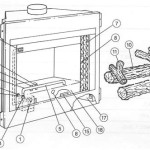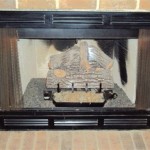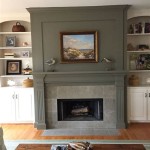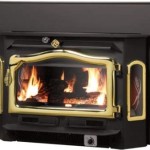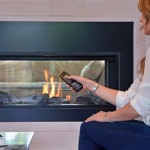```html
Outdoor Great Room Fireplaces: Extending Living Spaces and Enhancing Ambiance
Outdoor great room fireplaces are rapidly becoming a sought-after feature for homeowners looking to expand their living spaces beyond the confines of their interiors. These installations offer a multitude of benefits, transforming patios, decks, and yards into inviting and functional areas that can be enjoyed year-round. From providing warmth and light on chilly evenings to serving as a focal point for gatherings and entertainment, outdoor fireplaces significantly enhance the appeal and utility of any property.
The decision to incorporate an outdoor fireplace into a great room setting involves considering various aspects, including the type of fireplace, the materials used in its construction, the design aesthetic, and the overall functionality of the space. Careful planning and execution are crucial to ensure that the fireplace complements the existing landscape and architectural style while meeting the specific needs and preferences of the homeowner.
Types of Outdoor Fireplaces
The market offers a diverse range of outdoor fireplace options, each with its own set of advantages and disadvantages. The selection process should be driven by factors such as budget, available space, desired fuel source, and aesthetic preferences.
Wood-Burning Fireplaces: Traditional wood-burning fireplaces evoke a sense of rustic charm and authenticity. They provide a crackling fire and a genuine wood-burning scent that many find appealing. However, wood-burning fireplaces require a constant supply of firewood, regular cleaning to remove ashes, and adherence to local regulations regarding open burning. They also tend to produce more smoke and emissions compared to other types of fireplaces.
Gas Fireplaces: Gas fireplaces offer convenience and ease of use. They start instantly with the flip of a switch or the push of a button and provide consistent heat output. Gas fireplaces can be fueled by either natural gas or propane, depending on the availability of a gas line. They produce less smoke and emissions than wood-burning fireplaces and require minimal maintenance. However, the installation of a gas line can be costly, and the appearance of the flames may not be as realistic as those in a wood-burning fireplace.
Electric Fireplaces: Electric fireplaces are a versatile and environmentally friendly option. They do not require venting and can be easily installed in any location with access to an electrical outlet. Electric fireplaces rely on heating coils to generate warmth and often feature realistic flame effects to mimic the look of a real fire. They are relatively inexpensive to operate and require virtually no maintenance. However, electric fireplaces may not provide the same level of heat output as wood-burning or gas fireplaces, and the flame effects may not be convincing to some.
Fire Pits: While technically not a fireplace, fire pits are a popular alternative that offers a similar ambiance and functionality. Fire pits are typically smaller and more portable than fireplaces, making them a suitable option for smaller outdoor spaces. They can be fueled by wood, propane, or natural gas and come in a variety of shapes, sizes, and materials. Fire pits provide a casual and inviting gathering space for socializing and enjoying the outdoors.
Materials and Construction
The materials used in the construction of an outdoor fireplace significantly impact its durability, appearance, and overall performance. Choosing the right materials is essential to ensure that the fireplace can withstand the elements and complement the surrounding landscape. Several materials are available for outdoor fireplace construction, each with its own unique properties and characteristics.
Brick: Brick is a classic and durable material that is commonly used for outdoor fireplaces. It provides a timeless aesthetic and is resistant to heat, moisture, and wear. Brick fireplaces can be built in a variety of styles, from traditional to contemporary. The cost of brick can vary depending on the type and quality.
Stone: Stone offers a natural and rustic appearance that blends seamlessly with outdoor environments. Stone fireplaces can be constructed from a variety of stone types, including fieldstone, river rock, and flagstone. Stone is a durable and weather-resistant material that can last for many years. The cost of stone can vary significantly depending on the type and availability.
Concrete: Concrete is a versatile and cost-effective material that can be used to create a variety of outdoor fireplace designs. Concrete fireplaces can be poured in place or constructed from precast concrete blocks. Concrete is a durable and weather-resistant material that can be stained or painted to match any color scheme.
Metal: Metal fireplaces are often made from stainless steel or cast iron. Metal fireplaces offer a modern and sleek appearance and are relatively lightweight and portable. Stainless steel is resistant to corrosion and rust, making it a suitable material for outdoor use. Cast iron fireplaces provide excellent heat retention and can be used for cooking. Metal fireplaces can be more prone to heat radiating outwards compared to brick or stone.
In addition to the primary building materials, other components of an outdoor fireplace, such as firebricks, mortar, and chimney liners, should also be selected with care. Firebricks are used to line the firebox and protect the surrounding materials from the extreme heat. Mortar is used to bind the bricks or stones together and create a solid structure. A chimney liner is essential for venting smoke and gases safely and effectively.
Design and Functionality
The design of an outdoor fireplace should be carefully considered to ensure that it complements the surrounding landscape and architectural style. The fireplace should be aesthetically pleasing and functional, providing a comfortable and inviting space for relaxation and entertainment. Various design elements can be incorporated into an outdoor fireplace to enhance its appeal and functionality.
Size and Placement: The size of the fireplace should be proportionate to the size of the outdoor space. A large fireplace can overwhelm a small patio, while a small fireplace may not provide enough heat or visual impact in a larger area. The placement of the fireplace should also be carefully considered to maximize its functionality and minimize any potential hazards. The fireplace should be placed away from flammable materials, such as trees and shrubs, and should be easily accessible from seating areas.
Seating Areas: Integrating seating areas around the fireplace creates a more inviting and functional space. Seating can be arranged in a variety of configurations, depending on the size and shape of the outdoor space. Benches, chairs, and sofas can be used to create a comfortable and relaxing atmosphere. Consider the prevailing winds when designing seating, ensuring guests are not directly in the path of smoke.
Storage and Accessories: Incorporating storage for firewood, grilling tools, and other accessories can enhance the functionality of an outdoor fireplace. Storage can be integrated into the fireplace design or added as separate structures. Consider adding features such as a built-in grill, smoker, or pizza oven to further enhance the functionality of the outdoor space.
Lighting: Lighting plays a crucial role in creating ambiance and enhancing the functionality of an outdoor fireplace. String lights, lanterns, and spotlights can be used to illuminate the area and create a warm and inviting atmosphere. Consider using dimmable lights to adjust the brightness to suit different occasions.
Ventilation: Proper ventilation is essential for the safe and efficient operation of an outdoor fireplace. The fireplace should be designed to allow for adequate airflow, ensuring that smoke and gases are vented away from the seating area. A chimney or flue should be installed to direct the smoke upwards and away from the surrounding area. Local building codes often specify minimum height requirements for the chimney based on the size and proximity of structures.
Safety Considerations: Safety should be a top priority when designing and installing an outdoor fireplace. The fireplace should be constructed in accordance with local building codes and regulations. A fire extinguisher should be readily available in case of emergencies. Never leave a fire unattended, and always supervise children and pets when the fireplace is in use. It’s advisable to consult with a qualified contractor experienced in outdoor fireplace installations to ensure safety guidelines are followed and regulations are met.
In summary, incorporating an outdoor great room fireplace enhances outdoor living spaces, offering warmth, ambiance, and increased functionality. By carefully considering the type of fireplace, construction materials, design, and safety considerations, homeowners can create a stunning and inviting outdoor retreat that can be enjoyed for years to come. Whether choosing a traditional wood-burning fireplace or a convenient gas model, the addition of an outdoor fireplace can transform a simple backyard into a sophisticated and functional extension of the home.
```
25 Outdoor Fireplace Ideas Fireplaces Fire Pits

Single Sided Ready To Finish Fireplace Outdoor Greatrooms

Outdoor Fireplace Design Secrets From An Expert

Outdoor Fireplace Design Ideas Judd Builders Asheville Nc

16 Best Outdoor Fireplace Ideas 2024 Fire Pit Designs

30 Outdoor Fireplace Ideas Cozy Fireplaces

Outdoor Fireplaces Fire Pits Surrounds Landscape Architecture
:max_bytes(150000):strip_icc()/outdoor-sitting-area-x-6dcce254e357400a972576fc83afef5c.jpg?strip=all)
23 Outdoor Fireplace Ideas For A Glowing Retreat

Outdoor Fireplace Plans

Double Sided Indoor Outdoor Fireplace Heat Glo
Related Posts

